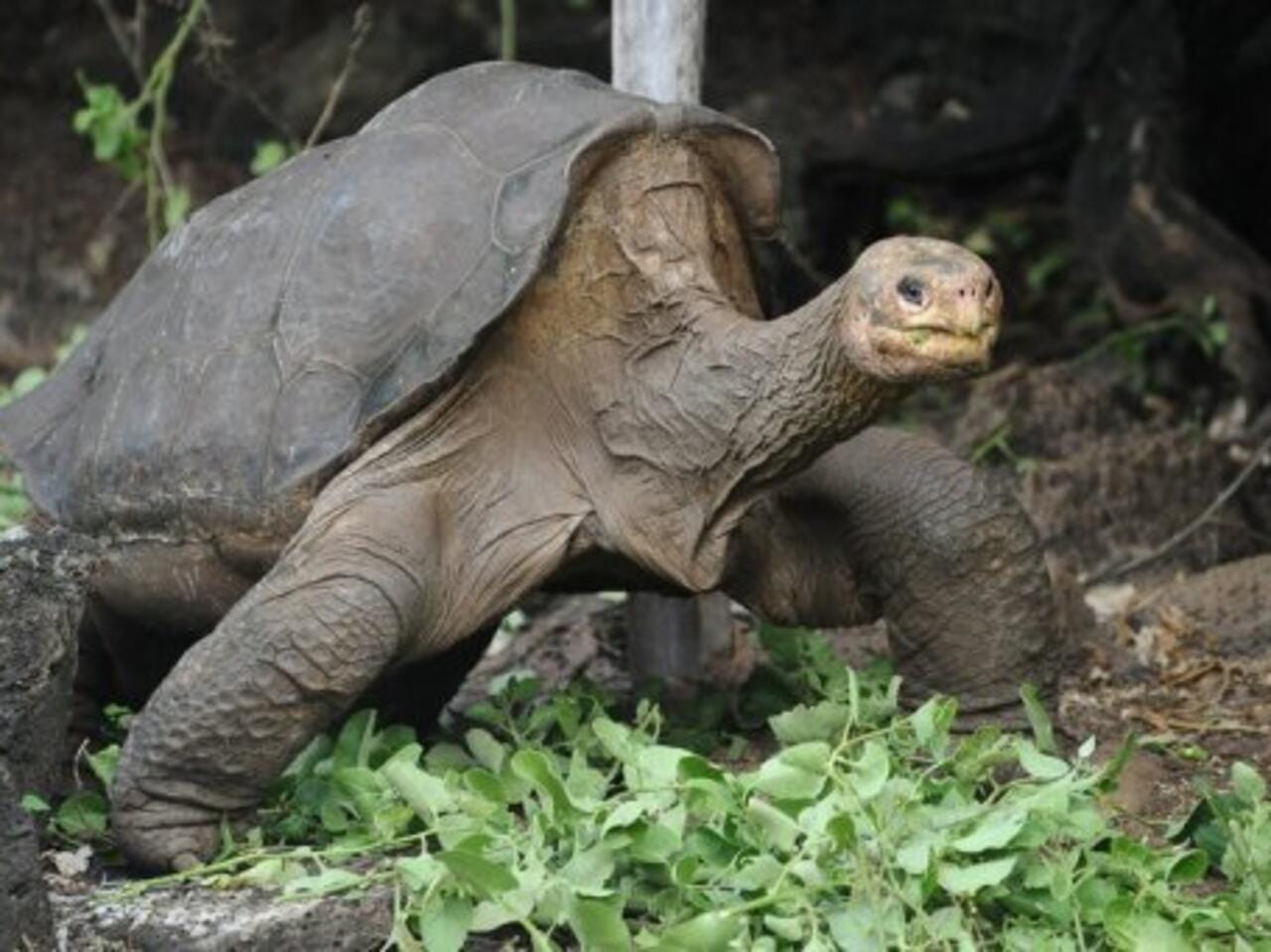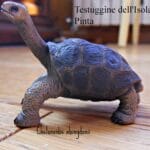Picture a giant tortoise, the last of its kind, living all alone on a remote island. This was Lonesome George, the Pinta Island tortoise whose life and death captivated the attention of the world. His tragic end in 2012 marked the extinction of his subspecies, but his story goes beyond sadness. It’s a testament to the power of conservation, the challenges it faces, and the hope that remains alive even when faced with extinction.
A Glimmer of Hope Amidst Loss
The Pinta Island tortoise, a creature that once roamed freely on a remote island in the Galápagos, now exists only in memory and scientific records. Their story is a sad reminder of how deeply human actions can impact the natural world. Sailors, passing through the islands, saw these gentle giants as a convenient source of food and relentlessly hunted them. This exploitation, along with habitat loss caused by introduced species like goats, led to their demise in the wild, leaving a void in the island’s ecosystem.
Enter Lonesome George, the last known Pinta Island tortoise. His very name evokes a sense of melancholy, a symbol of a species on the brink. He became a global ambassador for conservation, his story highlighting the fragility of life and the importance of protecting endangered species. Despite all efforts to find him a mate and ensure the survival of his kind, Lonesome George passed away in 2012, taking with him the last pure genes of the Pinta Island tortoise.
But amidst this loss, there is a flicker of hope. Researchers, delving into the genetic makeup of tortoise populations on other islands, made a startling discovery. Some tortoises carried Pinta Island tortoise ancestry within their genes – evidence of past hybridization. This finding suggests that the Pinta lineage may not be entirely lost, that somewhere in these hybrid tortoises, the spark of the Pinta Island tortoise might still flicker. Could future breeding programs potentially revive at least part of this lost lineage?
Organizations like the Galapagos Conservancy have taken up the mantle, devoting themselves to protecting the remaining Galapagos tortoise species. Their tireless efforts focus on habitat restoration, giving these creatures a safe haven to thrive. They also carefully manage breeding programs, working to bolster existing populations and potentially, one day, revive the Pinta lineage using the genes that persist in those hybrid tortoises.
The Pinta Island tortoise’s story is undeniably tragic, a stark reminder of past mistakes. But it is also a call to action. It compels us to learn from our past, to recognize the interconnectedness of all living things, and to dedicate ourselves to protecting our planet’s incredible biodiversity. The future of the Galapagos tortoises, and countless other species teetering on the brink, depends on our commitment to conservation.
The Last Glimpse: When Did the Pinta Island Tortoise Disappear?
Imagine a creature so unique, so tied to its island home that it existed nowhere else on Earth. That was the Pinta Island tortoise, once thriving in the Galápagos Islands. Sadly, the last glimpse anyone got of this magnificent tortoise in its natural habitat was way back in 1971. They found just one, a lone survivor they later called Lonesome George.
He was taken to the Charles Darwin Research Station on Santa Cruz Island, where scientists hoped for a miracle, a chance to save his kind. Lonesome George became a symbol of hope for conservation, a living reminder of what we stand to lose.
But in 2012, the world mourned as Lonesome George, the last of the Pinta Island tortoises, passed away. It was a stark reminder of how fragile life can be and the devastating effects of human impact.
Could the Pinta Island tortoise ever return? It seems impossible, but scientists are always searching for clues. They’re looking into hybrid tortoises, those with Pinta Island tortoise ancestry in their family tree. It’s a long shot, but maybe, just maybe, these hybrids hold a key to bringing back a piece of the Pinta Island tortoise legacy.
The story of the Pinta Island tortoise is a sad one, but it highlights how important it is to understand and protect our planet’s biodiversity. It’s a reminder that extinction is forever, and we must act now to prevent more such tragedies.
Lonesome George: A Legacy Remembered
Sadly, Lonesome George, the famous giant tortoise, is no longer with us. He passed away in 2012. You see, Lonesome George wasn’t just any tortoise – he was the last known Pinta Island tortoise, a very special type of giant tortoise from the Galápagos Islands.
His death was a big deal because it meant that his entire subspecies, the Pinta Island tortoise (scientists call them Chelonoidis niger abingdonii), was officially considered extinct. It’s a stark reminder of how fragile life can be, especially on islands.
But even though Lonesome George is gone, his story isn’t over. Scientists are studying his DNA to try and understand why these giant tortoises lived so long. They even think they might be able to use his genes to bring back the Pinta Island tortoise someday!
They’re also searching for any tortoises that might be related to Lonesome George, tortoises that might carry some of his Pinta Island genes. If they can find these relatives, they might be able to breed them and slowly bring back a population of Pinta Island tortoises over time. It’s a long shot, but the possibility is captivating.
Lonesome George’s life and death are powerful reminders of how important it is to protect our planet. It’s a story that makes us think about the impact humans have on the environment and the importance of saving species before it’s too late.
Sizing Up a Giant: How Big Were Pinta Island Tortoises?
We’ve already covered some background on these amazing creatures, but let’s delve into their size – they were truly something else! Imagine a tortoise growing to be about the length of a tall man, maybe even taller if it stretched its neck up high. That’s how big the Pinta Island tortoise could get, reaching a whopping 6 feet long! And they weren’t just long; they were tall too, measuring up to 5 feet high! These were giants, easily one of the largest land reptiles to ever roam the Earth.
Their size wasn’t their only distinguishing feature, though. They sported these unique shells, called “saddleback” shells because their shape kind of resembles a saddle. This high-peaked shell wasn’t just for looks; it actually gave them an advantage in their environment. Since they lived on islands with limited food, the saddleback shape allowed them to stretch their necks way up high to munch on taller vegetation that other animals couldn’t reach.
Sadly, their size and unique adaptations couldn’t save them from the impact of human activities. Introduced species like goats began competing for their food, gobbling up all the vegetation, and habitat loss further compounded the issue. By 2012, the heartbreaking decision was made to declare the species extinct.
Lonesome George, the last known Pinta Island tortoise, became a poignant symbol of their decline. He was found all alone back in 1971 and became a resident of the Charles Darwin Research Station. Despite efforts to breed him and potentially save his species, Lonesome George sadly passed away in 2012, leaving behind a legacy that underscores the importance of conservation efforts.
While the Pinta Island tortoise may be gone, hope for their lineage isn’t entirely lost. Scientists are exploring ways to potentially revive the Pinta bloodline through hybrid breeding programs. These programs involve breeding tortoises with Pinta ancestry, with the hope of eventually reintroducing a population back to their native islands. While it won’t bring back the Pinta Island tortoise exactly as they were, it represents a glimmer of hope for a piece of their legacy to live on.
Have you ever looked at the pink meanie jellyfish and wondered how it got its name? Learn more about this fascinating creature here.
Are you wondering what the smallest primate in the world is? The Philippine tarsier is the answer, so if you want to know more about this adorable creature, click here.
- Unveiling the Enigma: Mansoureh Khojasteh Bagherzadeh’s Public Appearances & Private Life in Iran - July 18, 2025
- Unveiling the Mystery: Mansoureh Khojasteh Bagherzadeh’s Husband: A Rare Glimpse into a Private Life - July 18, 2025
- Unveiling Masoud Khamenei’s Mother: Power, Influence, and Iran’s Future - July 18, 2025
















